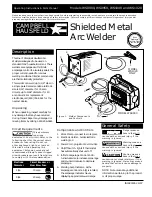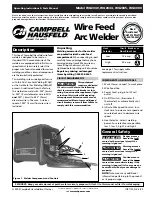
6
WMU-116 Radio Microphone
another or use Group 7 to manually select carrier frequencies in 25kHz steps. The groups have preset channel
spacing that work on the licence free band. Up to four microphones can be used together, use the same group
and select different frequencies for each microphone set.
Once a channel is selected, press SET to accept the channel and press SET again to transmit the IR
sync signal (animated lines will show next to IR in the display). Hold the IR detector on the handheld
microphone or bodypack transmitter up to the IR sender on the main unit to sync the carrier frequency to the
transmitter. The transmitter must be switched on for this to work and will flash briefly when the frequency is
synchronised and a padlock sign will appear on the receiver display. The two displays will show the same
frequency at this point.
In Use
Switching on the transmitter will send a radio carrier frequency to the receiver and also send a
pilot tone frequency, which is not audible but is used by the receiver to open the audio channel. This
system helps to avoid any spurious radio frequencies interfering with the wireless microphone signal.
When the transmitter’s RF signal is recognized by the receiver, an RF meter will show the carrier
signal strength in the LCD display, this is to the left of the display. If the transmitter is out of range the display
bars will dissapear. Likewise, speaking into the microphone will send audio over this carrier and an AF volume
meter will show the audio level in the LCD display.
For the neckband or lavalier microphone, there is also a mute switch on the top of the bodypack,
which can be used to temporarily cut the microphone output whilst maintaining the carrier
frequency. This may be useful to silence the mic whilst moving across the front of speakers or as a
standby setting.
If the wireless system is to be out of use for longer than a few minutes, it is preferable to switch the
transmitter off, which deactivates the radio carrier signal and powers down the transmitter.
Be sure to turn down the volume of the mixer or amplifier and then switch off the receiver.
Unplug signal leads from the receiver and mixer or amplifier when moving or packing away.
If the system is not to be used for long periods of time, remove the batteries from the transmitters
and unplug the power adapter from the receiver and the mains outlet.
Folding away or removing the antennas can also help avoid damage when the system is not in use.


























